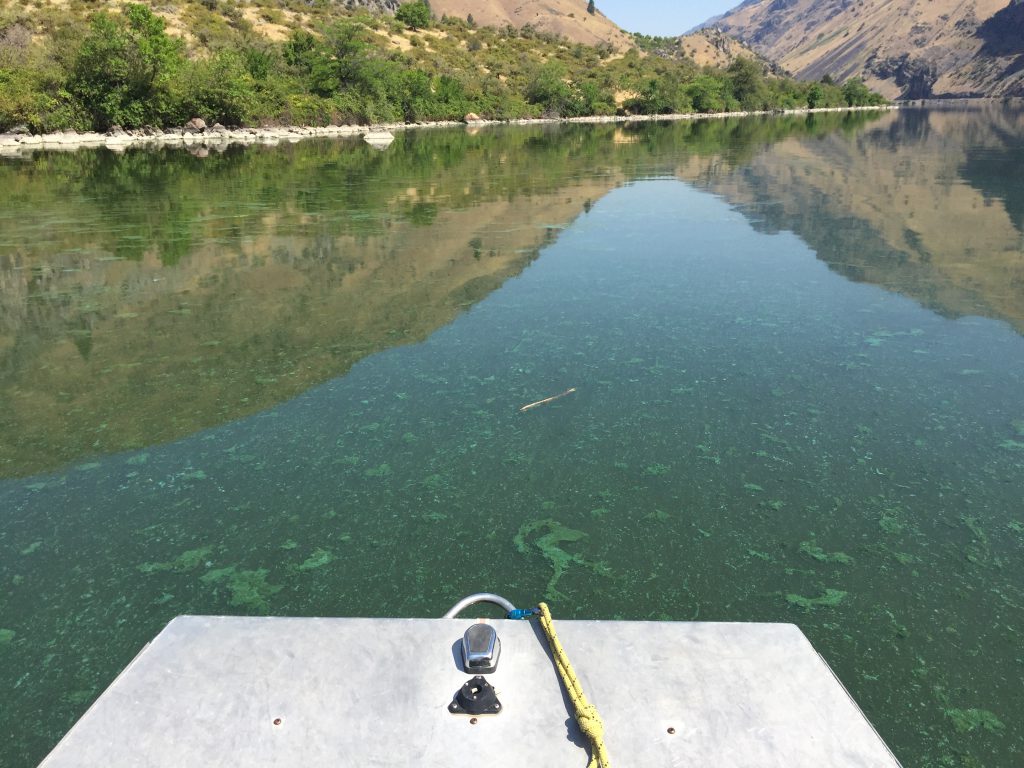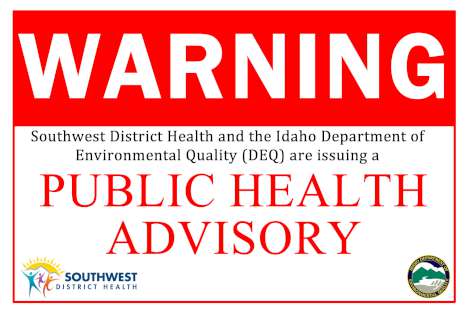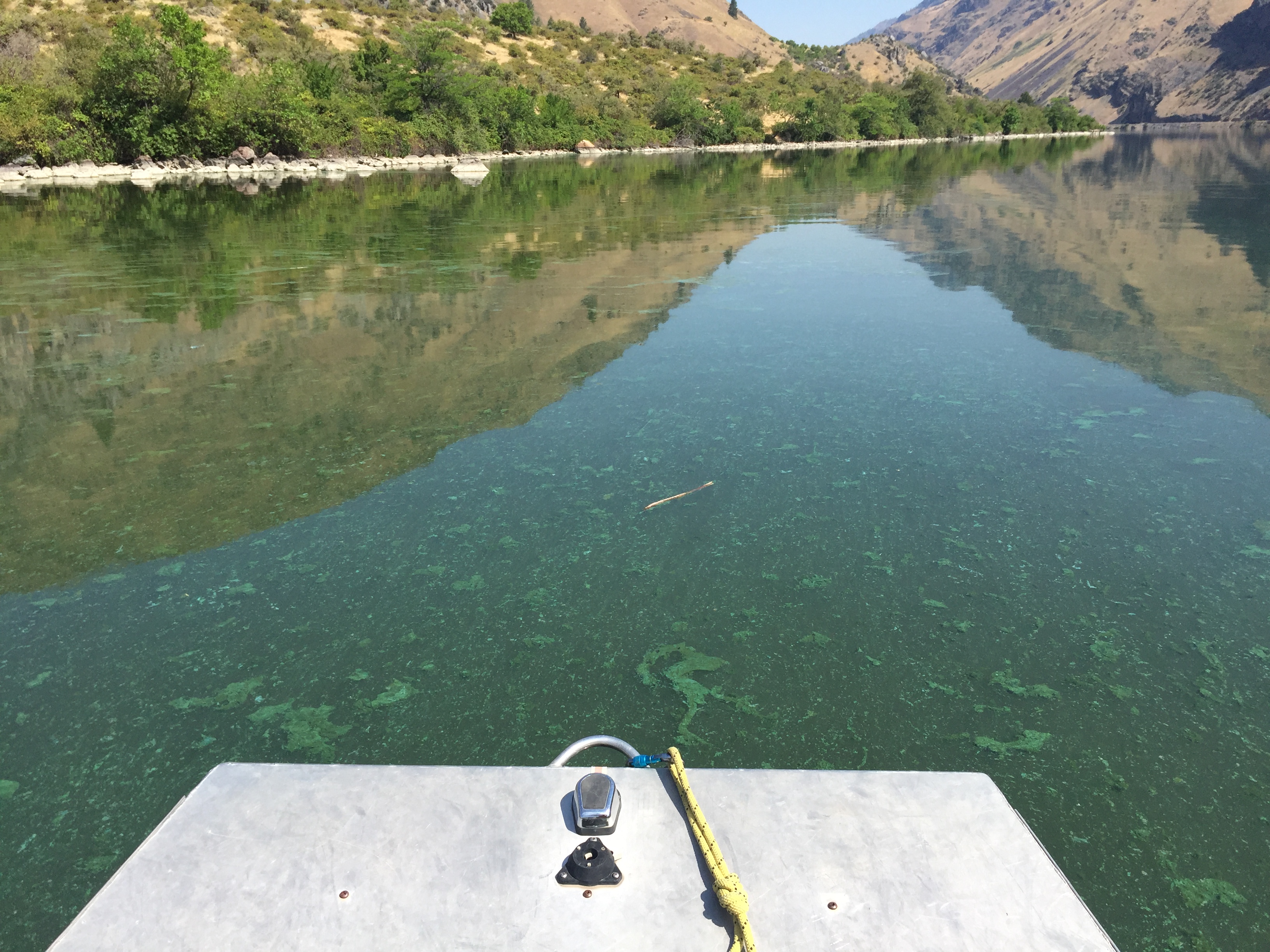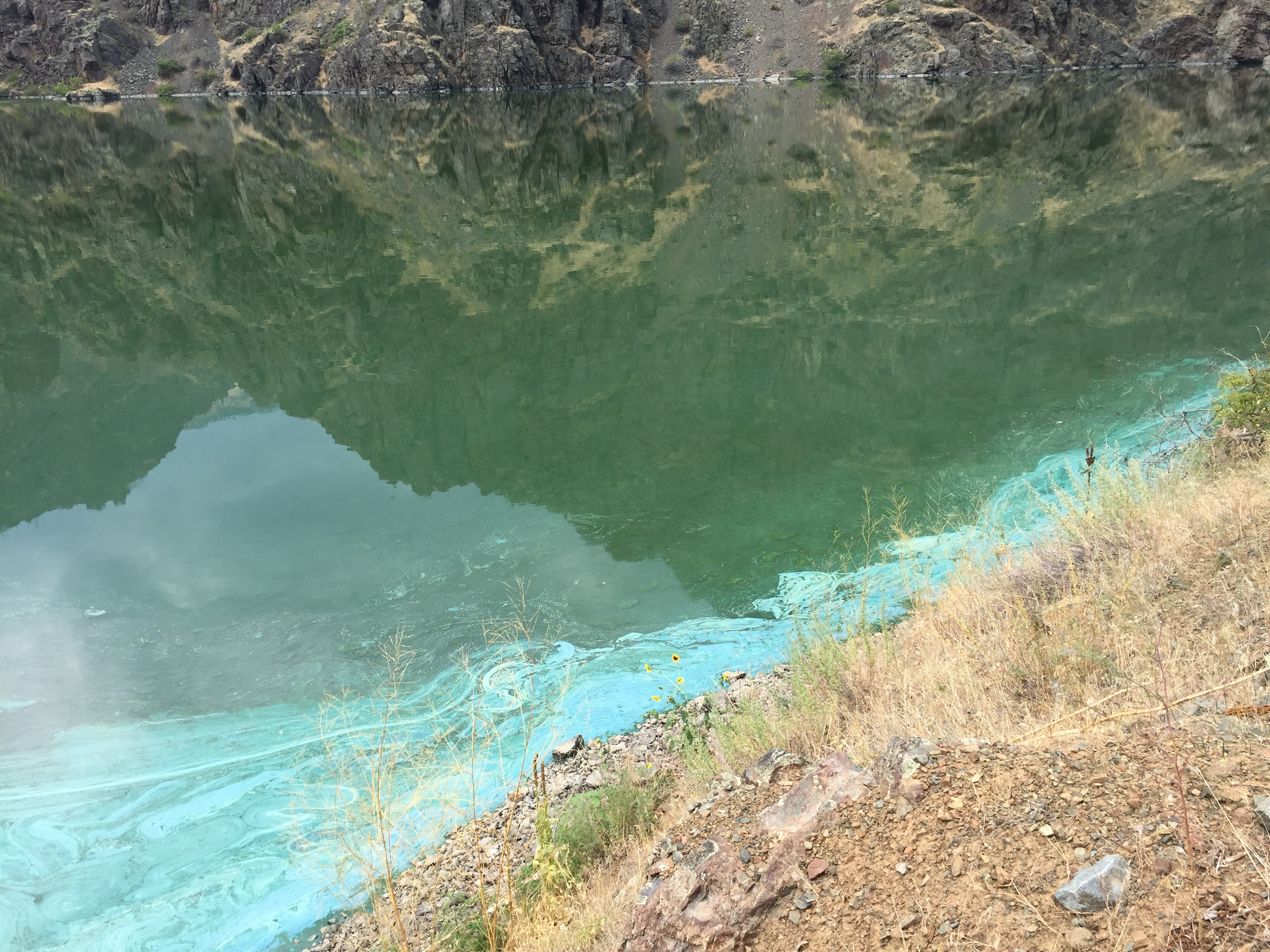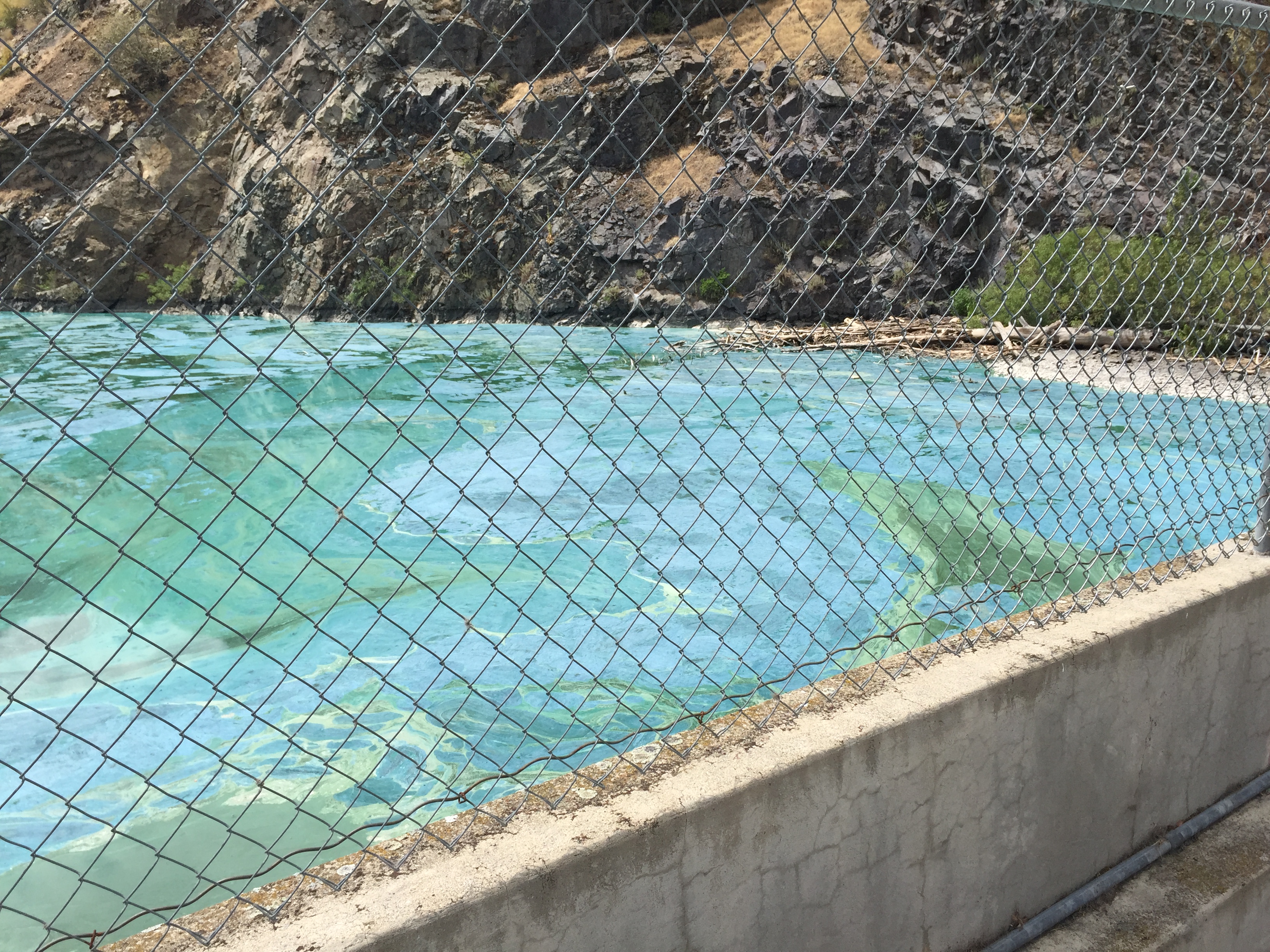Public Health Advisory
Elevated levels of cyanobacteria could be harmful to people, pets and livestock
Owyhee Co., ID — In cooperation with the Idaho Department of Environmental Quality (DEQ), Southwest District Health (SWDH) is issuing a health advisory for the Cottonwood Park and Campground at C.J. Strike Reservoir related to elevated levels of cyanobacteria that could be harmful to people, pets and livestock.
High counts of cyanobacteria can create a Harmful Algal Bloom (HAB), which can release harmful toxins. Given the high counts of cyanobacteria at the Cottonwood Park and Campground, conditions are right for a HAB to occur. People and their pets are advised to stay out of the water in this part of the reservoir, located at the Bruneau delta on the south side of the reservoir.
Cyanobacteria occur naturally and blooms occur in waters with high levels of nutrients such as phosphorus and nitrogen. “Whenever you are recreating in any kind of surface water, it’s important to be aware of your surroundings, whether or not there is an advisory in place,” said Chase Cusack, a Watershed Coordinator with Idaho’s DEQ Boise regional office. “While harmful algal blooms aren’t always obvious to the eye, people can look for things like a green or blue-green layer on top of the water that might look like paint, or thick mats, especially along the shoreline. If you suspect a harmful algal bloom, you should report it to the DEQ.”
Areas with high levels of cyanobacteria may also be white or brown in color and look like surface scum, resembling pea soup, and can have an unpleasant odor or stench.
SWDH and DEQ advise the following precautions where high counts of cyanobacteria and harmful algal blooms are known to be present:
- Humans and animals should stay out of the affected water. Swimming, wading, or other activities with full body contact of pond water should be avoided.
- Humans, pets, and livestock should not drink the affected water.
- Fish should be cleaned and rinsed with clean water. Only the fillet portion should be consumed. All other parts should be discarded.
- Pets and livestock are vulnerable to cyanobacteria and their toxins and should stay out of water where blooms are visible. Pets and livestock can be exposed to cyanobacteria and their toxins through drinking, swimming, or self-grooming by licking their wet coat or paws. A reaction will likely require immediate veterinary attention.
- Do not allow pets to eat dried algae.
- If affected water contacts skin or pet fur, wash with clean potable water as soon as possible.
- Areas of visible algae accumulation should be avoided.
Symptoms of Exposure
People who are exposed to water with high concentrations of cyanobacteria or cyanotoxins may experience nausea, vomiting, diarrhea, difficulty breathing, skin irritation, allergic responses, liver damage, or neurotoxic reactions such as tingling fingers and toes. Anyone with symptoms should seek medical attention. Boiling or filtering the water will not remove cyanotoxins.
More Information on Cyanobacteria and HABs
For more information about cyanobacteria and harmful algal blooms, including a map of advisories currently in effect throughout Idaho, visit DEQ’s website at http://www.deq.idaho.gov/water-quality/surface-water/recreation-health-advisories/
Additional Resources
Idaho Department of Health and Welfare (IDHW) – Harmful Algal Blooms Webpage
Idaho Power – C.J. Strike Recreation Area
# # #
Contacts:
Katrina Williams, Media Contact
Southwest District Health
Katrina.Williams@phd3.idaho.gov
desk (208) 455-5317 | cell (208) 899-1268
Chase Cusack, Watershed Coordinator
Idaho Department of Environmental Quality (IDEQ)
Boise Regional Office
desk (208) 373-0490 | chase.cusack@deq.idaho.gov
![]()
